There’s a fine line between old-fashioned and outdated when it comes to a restaurant as venerable as New Orleans’ 131-year-old Commander’s Palace. I’d expected that Commander’s might have strayed to the wrong side, but I wasn’t ready for it to have become so weird along the way.
Commander’s Palace is a restaurant that comes described not as an institution, but the institution — no mean feat in a city with as storied a dining culture as New Orleans. It appears on every restaurant ranking you’ll find, usually described as ‘unmissable’, and is a tricky table to book — especially for lunch, only served two days a week, when martinis cost 25c each and are wisely limited to three per head. Its former head chefs are spoken about with a reverence that suggests it’s a title of serious acclaim.
From the first bite of food, it’s clear that something a little odd is afoot. A small plate of garlic bread strips are presented to the table, and I really mean presented: the plate is offered to each of us in turn, the server downright insisting we take one by hand before she’ll consider leaving the remainder on the table. The bread is rich and cheese crusted; it’s served with a bowl of whipped butter anyway. It all tastes a bit like it might have come out of a packet. Strange food, stranger service, and we’re only just beginning.
I knew from the outset that Commander’s was likely to take an old-fashioned approach to service, just as any of London’s oldest fine dining spots would, but it still managed to surprise me. Commander’s is one of the few restaurants around to still insist on a dress code — collared shirts essential for men, jackets preferred — which seemed likely to set the stage for an overtly formal experience. That’s not what you get though: there’s no stereotypically snobby maître d' here, just all-American warmth, but much more of it — commendable, if nothing else, for taking some of the intimidation out of fine dining without giving up the glamour. Three different staff members came over to introduce themselves by name before we’d even been handed a menu; I’m pretty sure I never even saw one of them again.
It’s the servers’ stranger flourishes for which I’ll always remember Commander’s Palace though. The hand-served garlic bread; the insistence on replacing my white napkin with a black one with no real explanation (to better match my dark trousers?); the busser who delivered fresh glasses of iced water, unprompted, to replace the existing pair that we’d sullied by drinking three whole sips of. I suppose this sort of treatment is supposed to make you feel left after; it mostly left me bemused.
There are rotating seasonal tasting menus available, but instead we play it safe and order the staple dishes that every food writer who’s visited the city seem to recommend. This starts with turtle soup, a reddish-brown goop which is topped up tableside with a glug of dry sherry that quickly proves to be the best thing in the bowl. It is, at least, better than the seafood gumbo, which is overly thick, closer to stew than soup, and the only gumbo of the trip we don’t positively inhale.
A romaine salad is topped with what seems suspiciously like packaged shredded cheese, along with beige croutons and a dusting of bacon crisp. It looks like it was prepared according to a recipe written in the ‘70s, and there’s a decent chance it was.
Lacquered quail is the best savoury dish we order, though ‘savoury’ is pushing it a little — the Grand Marnier & Cognac jus is sickly sweet, overwhelming the cider-braised cabbage and pork boudin that accompany the bird. Elsewhere, good shrimp lay on a bed of bad grits in a chorizo courtbouillon broth, over-complication getting in the way of doing the simple stuff well.
If there’s one dish that absolutely everyone seems to insist on, it’s the bread pudding soufflé, first introduced to the menu 50-odd years ago by the restaurant’s most famous former chef, Paul Prudhomme. This arrives towering and wobbly, before it is dramatically punctured as your server plunges a spoon of whisky cream deep into its innards. Despite my best efforts I didn’t manage to fit in any other creole bread puddings on this trip, so I don’t know if it’s meant to be quite so overwhelmingly sweet, but the warm spicing is welcome, and the soufflé itself is perfectly airy. This is the best thing we eat, and ostentatious enough to suit the glamorous dining room, but still manages to underwhelm a little thanks to the intense sugar rush.
I don’t want to give the impression that there was nothing to enjoy about Commander’s Palace. I had the best Sazerac of the trip here, and while we made a pretty unadventurous wine choice with a cheap Californian Sauvignon Blanc, the list is colossal and remains the main reason the restaurant still receives occasional awards. The dining room is beautiful, the absurd approach to service genuinely brought me no end of joy, and I’d still be a little bit tempted by a return visit for the 25c martini lunch.
But this is a restaurant, and none of that matters so much as what you actually eat. The food isn’t bad per se (though it’s also not great…), it just feels like it’s been ripped from another time, preserved in aspic as a historical curio. That’s part of the charm, of course, but I can’t help but feel there’s a better balance to be struck between reverence to old recipes and a recognition that other restaurants have gotten better and a place like Commander’s risks being left behind.
Upmarket takes on down home food make sense for a fine dining institution in a city with such a strong sense of its local cuisine. But it’s a principle that only works so long as the recipes still feel as fancy as the restaurant, still offer something to justify paying double the price of other places in town. That requires changing — even if just a little — with the times.


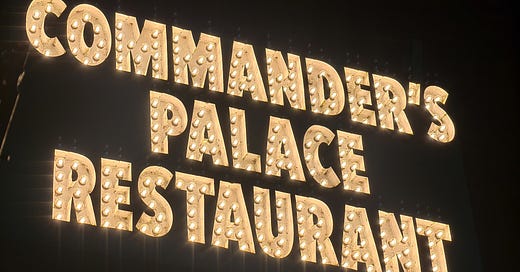



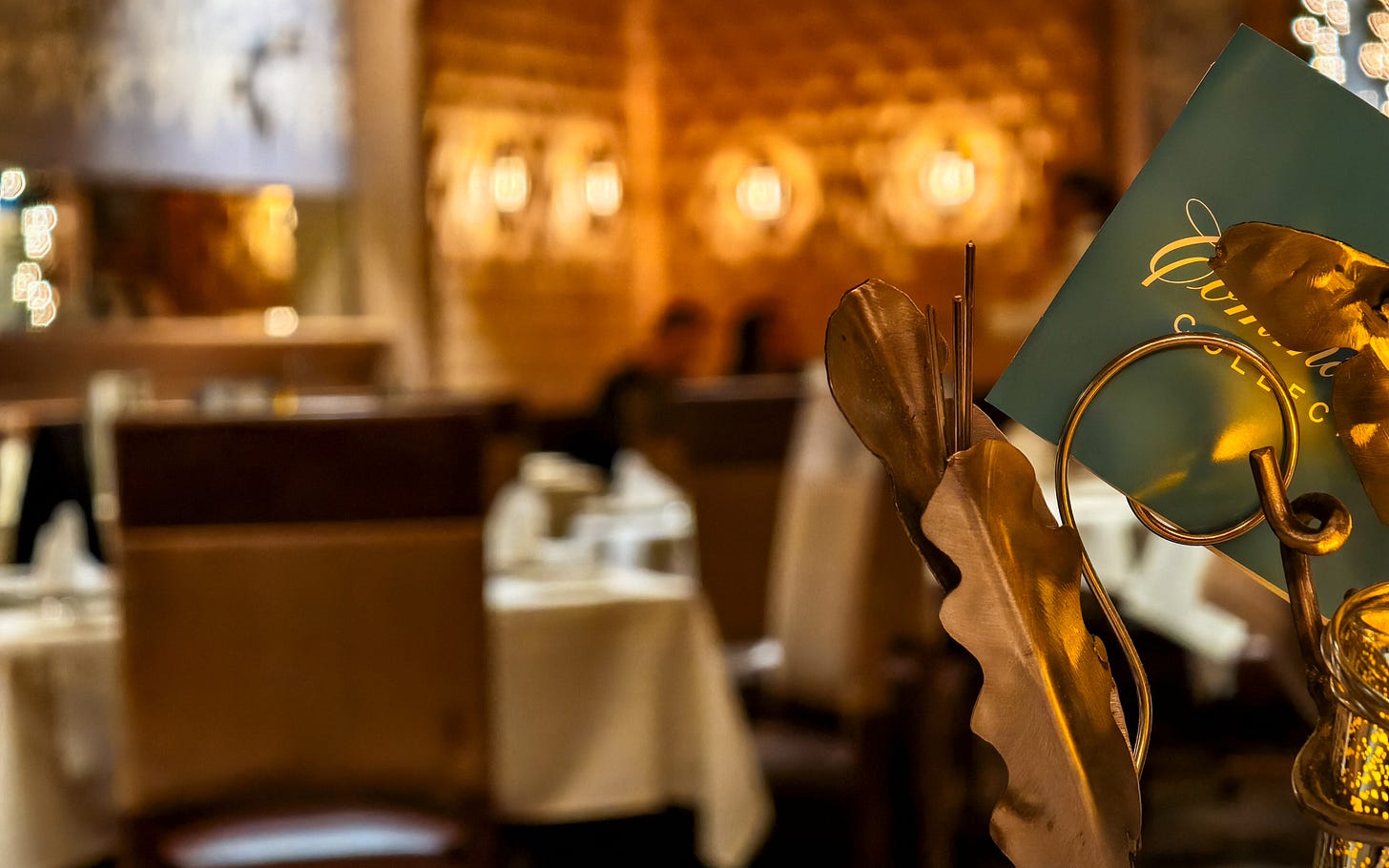
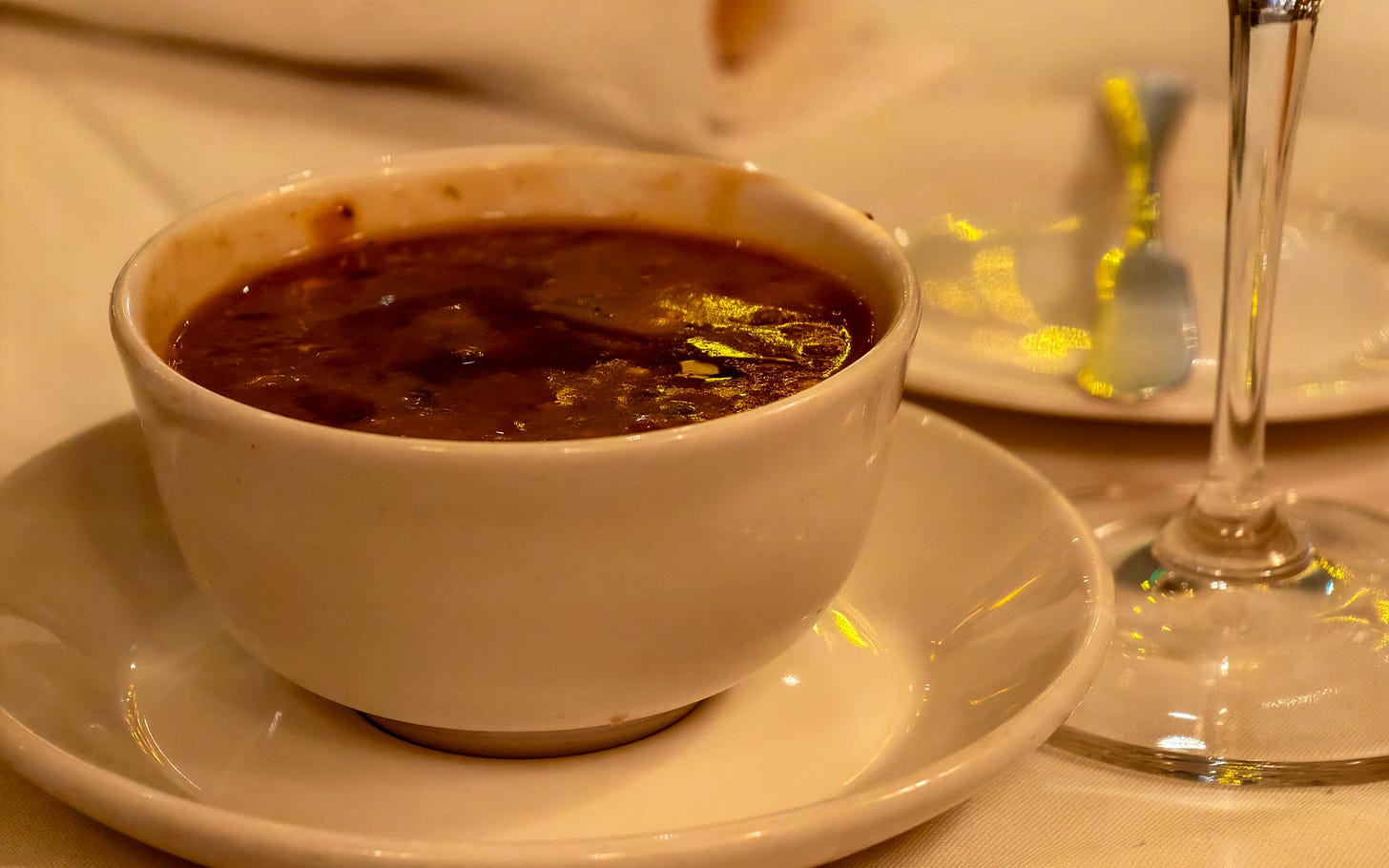
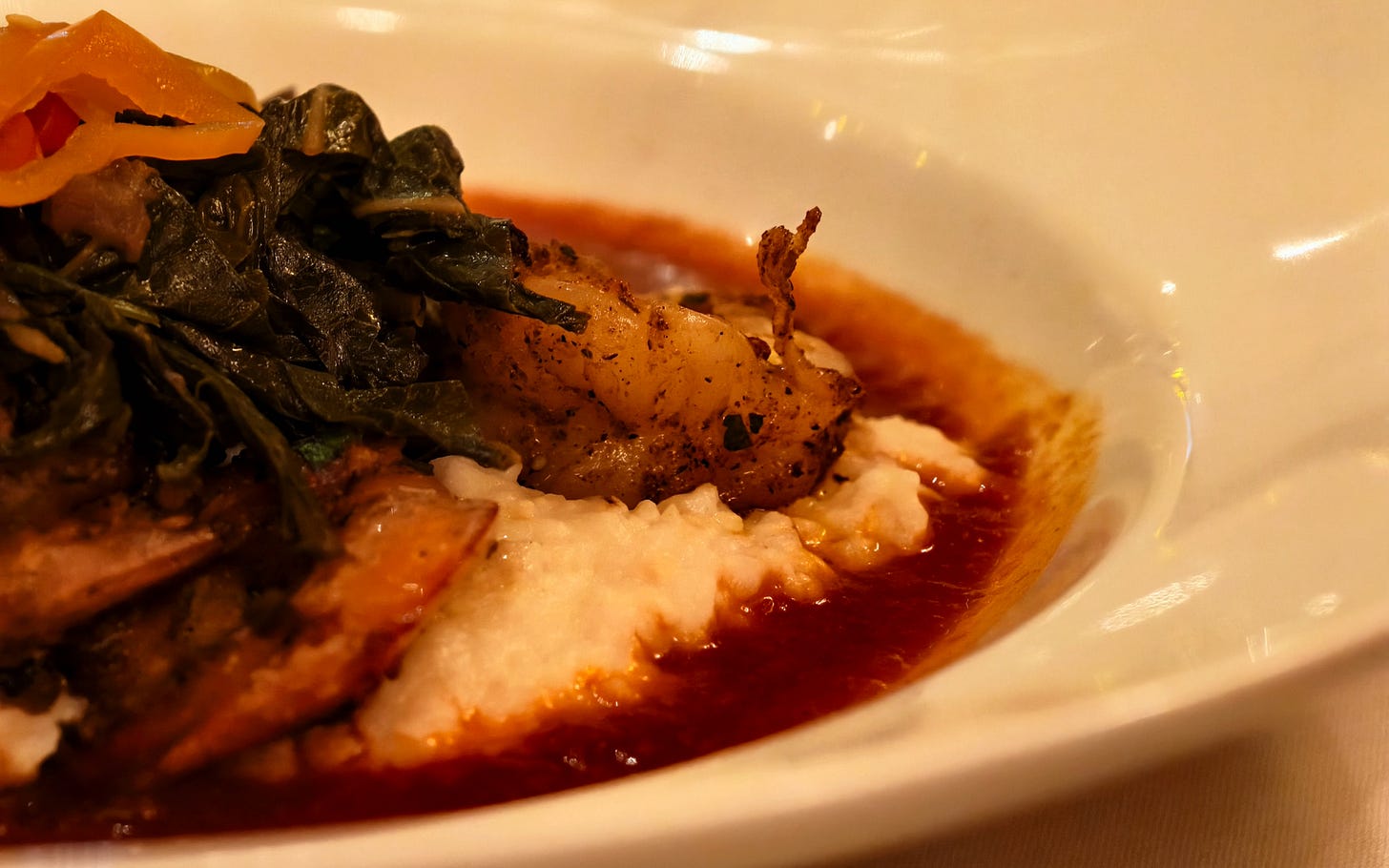
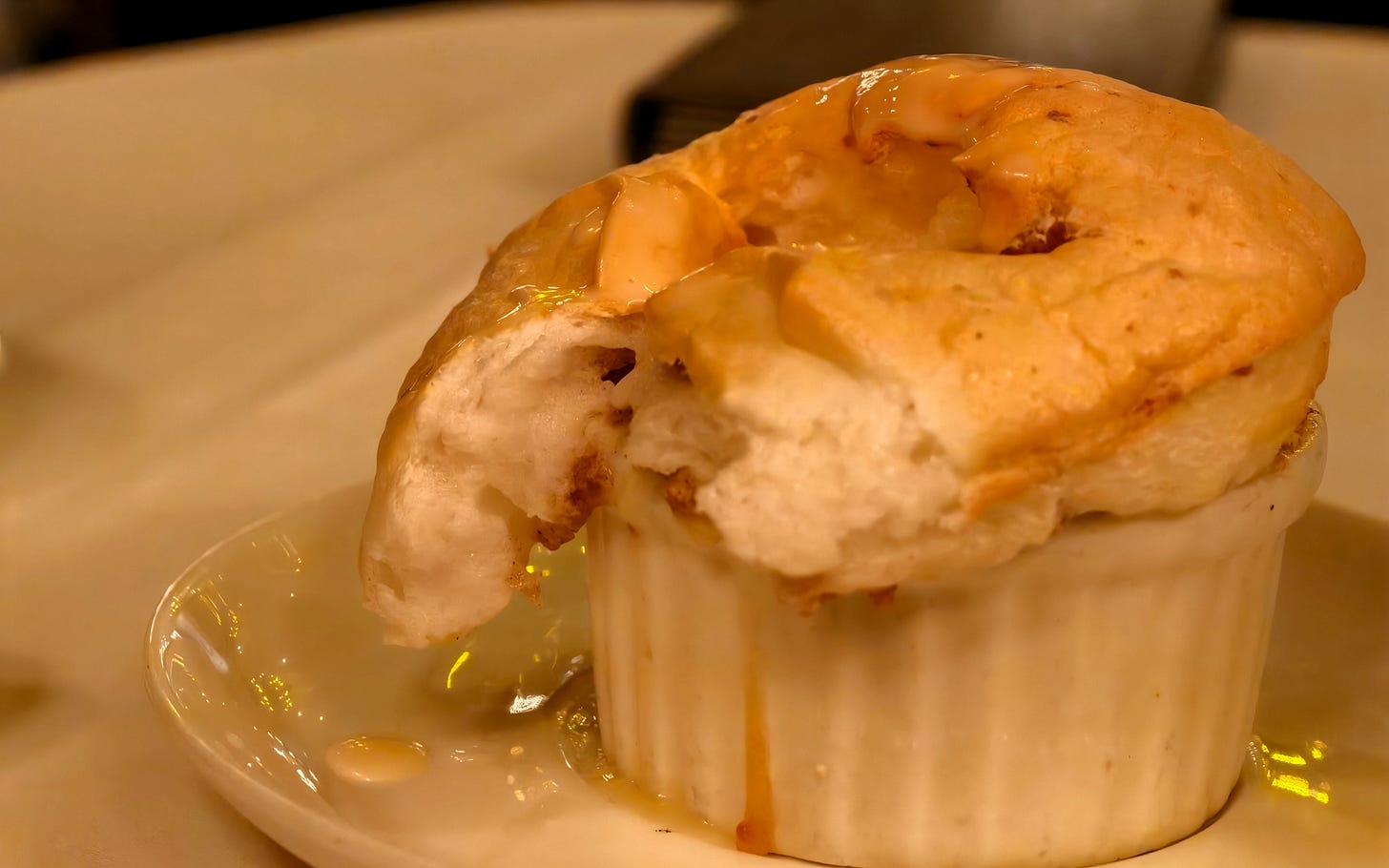
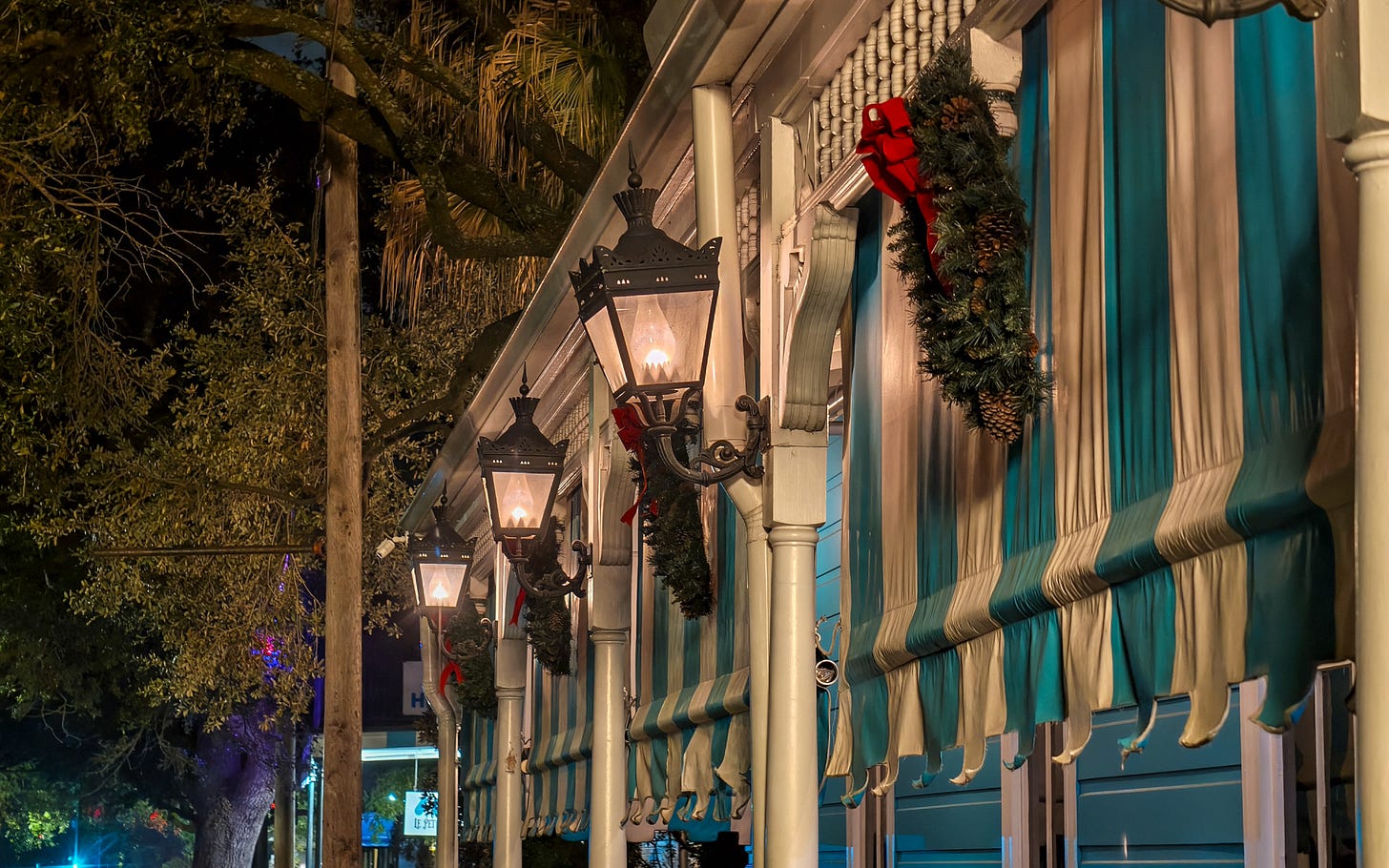
The black napkin is because a white napkin risks leaving lint on your dark trousers.
Did you make it to Galatoire's at all? I think it's much better these days than Commanders, although you have to queue up for the real dining room and wear a jacket.